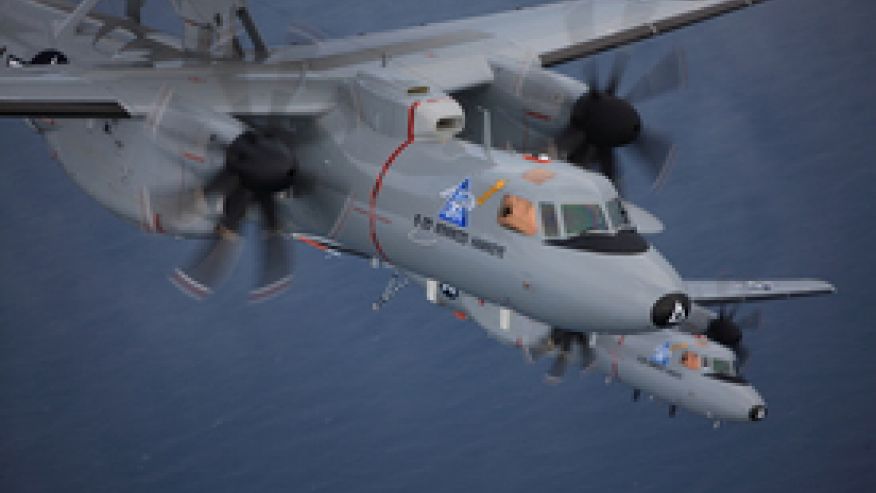
The newest, most advanced Hawkeye aircraft, has achieved initial operational capability, significantly boosting the U.S. Navy’s battlefield communications.
Northrop Grumman’s E-2D Advanced Hawkeye provides the Navy fleet with next-generation eyes. It can help manage missions, keep carrier battle groups out of harm’s way, and sweep ahead of a strike.
Dubbed “the digital quarterback,” the Hawkeye E-2D gives warfighters even better awareness in the battle space and boosts airborne battle management.
The latest variant of this airborne early warning command and control platform has just reported for duty. Last month the Navy announced that the first operational squadron is ready to start deployment prep with E-2D Hawkeye aircraft.
The aircraft’s design is unique. It has a fully integrated all-glass tactical cockpit, a rotating rotodome and a four vertical stabilizer tail configuration. Its 360-degree radar coverage provides enhanced situational awareness and all-weather tracking.
And it will provide 360-degree surveillance for American warfighters.
How is it more advanced?
The newest Hawkeye has significantly evolved since the earlier E-2 models, with the new, more powerful, AN/APY-9 radar system among its standout capabilities.
Northrop Grumman describes Hawkeye’s radar technology, improved data processing, and communications as not just next generation, but a two-generation jump ahead.
These advances give warfighters the ability to see more targets at much further distances.
The new cutting-edge radar sensor capability means that warfighters can receive better data more quickly. Accelerating delivery of crucial data means that warfighters can find out about threats and engage faster.
The radar can also operate well in a cluttered and electronically jammed war environment.
Hawkeye E-2D also features other advances, such as a new mission computer and tactical workstations, as well as advanced identification friend or foe system.
How will it be used?
Hawkeye can be deployed for a range of tasks, from missile defense through to border security. It supports unprecedented response to time-critical threats.
Its excellent sensor data, battle space situational awareness, and connectivity to other airborne assets make this “digital quarterback” ideal for coordinating air strikes against hostile targets.
The Advanced Hawkeye will play a role in the Navy’s Sea Power 21 strategy as air missile defense within the ‘Sea Shield’ defensive component of the strategy.
And as part of ‘Sea Strike,’ the offensive portion of Sea Power 21, Hawkeye can provide advanced detection and tracking for operations in land and littoral, or coastal, environments.
With its open-architecture network connectivity, it can act as a FORCEnet enabler and help coordinate time-critical targeting and strike operations. FORCEnet is the naval command and control component of Sea Power 21.
Hawkeye’s combined capabilities are a big advantage in defending and protecting U.S. forces in coastal areas and on land.
Well-concealed enemy launchers firing high-speed missiles that fly low with low signatures can be a threat. This type of threat often means that forces have very little reaction time once a missile breaks on the radar horizon.
For forces operating in littoral environments, safe access is crucial. The more common these advanced cruise missiles become, the more a solution like Hawkeye becomes important.
Effectively an airborne battle manager, Hawkeye can operate from forward-deployed aircraft carriers.
Read more: New Hawkeye aircraft is US Navy’s ‘digital quarterback’















